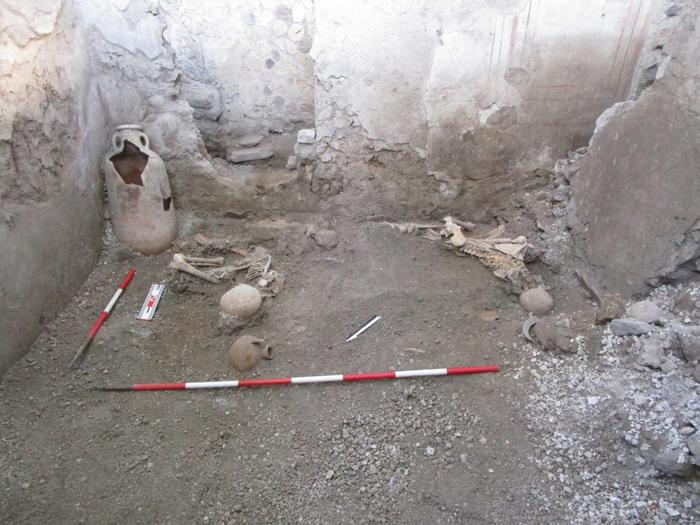The eruption of Mount Vesuvius in 79 CE showered the Roman town of Pompeii in volcanic ash and pumice before blanketing it in a rapid stream of piping-hot gas and volcanic matter. While the red-hot wrath of the volcano may seem like the prime killer, new evidence has shown another deadly force was at play: furious earthquakes.
In his eyewitness account of Pompeii’s destruction, Pliny the Younger notes that the eruption was accompanied by “a trembling of the earth.” His letters explain: “It was so particularly violent that night that it not only shook but actually overturned, as it would seem, everything about us.”
Until now, there was no solid evidence to support his historical account of tremors. However, recent excavations in the Insula dei Casti Amanti in the heart of Pompeii’s ruins reveal that concurring earthquakes also played a significant role in the town’s destruction.
The team of archeologists and volcanologists noticed that many of the victims did not die of inhaling ash or extreme heat, but were crushed by collapsing buildings.
“We found peculiar characteristics that were inconsistent with the effects of volcanic phenomena described in the volcanological literature devoted to Pompeii. There had to be a different explanation,” Dr. Mauro Di Vito, study co-author and a volcanologist and director of INGV-Osservatorio Vesuviano, said in a statement.
Poor dudes: Two skeletons in the ruins of a Pompeii building that were killed by wall collapses triggered by earthquakes.
Image Credit: Pompeii Archaeological Park
They were particularly interested in two male skeletons, both around 50 years of age. The position of the first individual suggests he was suddenly crushed by a collapsing wall, suffering severe injuries that caused instant death. In contrast, the second individual seems to have been aware of the danger and attempted to shield himself with a round wooden object, parts of which were found by researchers in the volcanic deposits.
“The people who did not flee their shelters were possibly overwhelmed by earthquake-induced collapses of already overburdened buildings. This was the fate of the two individuals we recovered,” said co-author Dr Valeria Amoretti, an anthropologist who heads the Applied Research Laboratory of Pompeii Archaeological Park.
Importantly, both bodies were found on top of the blanket of volcanic pumice, rather than under it. This suggests they survived the first phase of the eruption when volcanic rocks rained down on the town for 18 hours, causing many inhabitants to seek shelter.
While hiding for their lives, they were rocked by earthquakes and squished beneath the falling structure. The researchers concluded the building’s collapse was unlikely to be caused by falling debris and appeared more consistent with the shimmying of a seismic earthquake. After their deaths, the settlement was then swamped by the pyroclastic currents of searing hot gas and ashy debris, which killed the remaining survivors.
Now that it’s evident that earthquakes were also a factor in Pompeii’s demise, it’s not hard to see why the ancient catastrophe killed an estimated 2,000 people in town.
“New insight into the destruction of Pompeii gets us very close to the experience of the people who lived here 2,000 years ago. The choices they made as well as the dynamics of the events, which remain a focus of our research, decided over life and death in the last hours of the city’s existence,” concluded co-author Dr. Gabriel Zuchtriegel, director of the Pompeii Archaeological Park.
The new study is published in the journal Frontiers in Earth Science.
Source Link: Doomed Skeletons At Pompeii Show The Volcano Wasn't The Sole Killer
